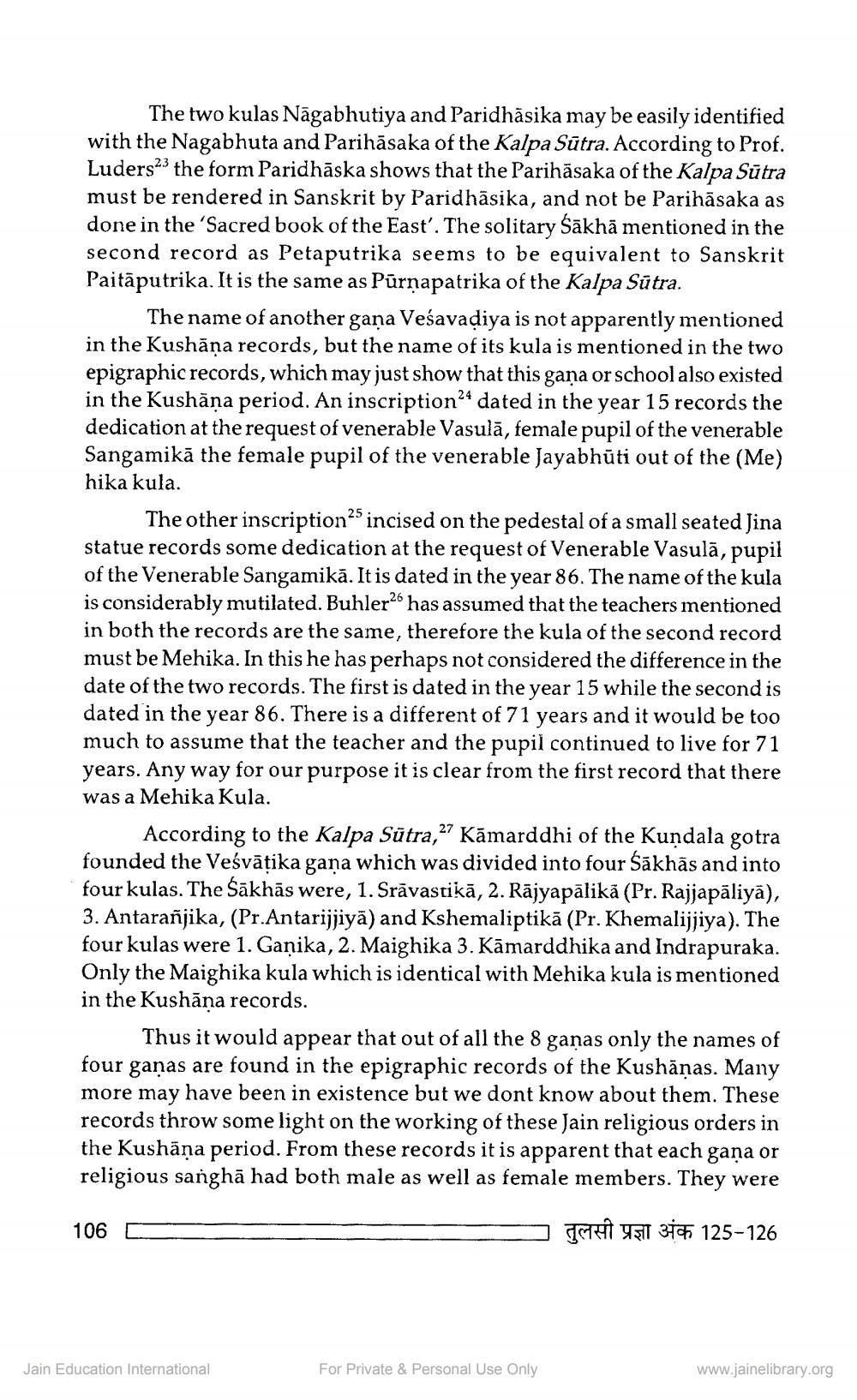________________
The two kulas Nāgabhutiya and Paridhāsika may be easily identified with the Nagabhuta and Parihāsaka of the Kalpa Sūtra. According to Prof. Luders?the form Paridhāska shows that the Parihāsaka of the Kalpa Sūtra must be rendered in Sanskrit by Paridhāsika, and not be Parihāsaka as done in the 'Sacred book of the East'. The solitary Sākhā mentioned in the second record as Petaputrika seems to be equivalent to Sanskrit Paitāputrika. It is the same as Pūrņapatrika of the Kalpa Sūtra.
The name of another gana Veśavadiya is not apparently mentioned in the Kushāna records, but the name of its kula is mentioned in the two epigraphic records, which may just show that this gaņa or school also existed in the Kushāņa period. An inscription4 dated in the year 15 records the dedication at the request of venerable Vasulā, female pupil of the venerable Sangamikā the female pupil of the venerable Jayabhūti out of the (Me) hika kula.
The other inscription25 incised on the pedestal of a small seated Jina statue records some dedication at the request of Venerable Vasulā, pupil of the Venerable Sangamikā. It is dated in the year 86. The name of the kula is considerably mutilated. Buhler26 has assumed that the teachers mentioned in both the records are the same, therefore the kula of the second record must be Mehika. In this he has perhaps not considered the difference in the date of the two records. The first is dated in the year 15 while the second is dated in the year 86. There is a different of 71 years and it would be too much to assume that the teacher and the pupil continued to live for 71 years. Any way for our purpose it is clear from the first record that there was a Mehika Kula.
According to the Kalpa Sūtra,27 Kāmarddhi of the Kundala gotra founded the Veśvāțika gana which was divided into four sākhās and into four kulas. The Sākhās were, 1. Srāvastikā, 2. Rājyapālikā (Pr. Rajjapāliyā), 3. Antarañjika, (Pr.Antarijjiyā) and Kshemaliptikā (Pr. Khemalijjiya). The four kulas were 1. Gaņika, 2. Maighika 3. Kāmarddhika and Indrapuraka. Only the Maighika kula which is identical with Mehika kula is mentioned in the Kushāņa records.
Thus it would appear that out of all the 8 ganas only the names of four ganas are found in the epigraphic records of the Kushāṇas. Many more may have been in existence but we dont know about them. These records throw some light on the working of these Jain religious orders in the Kushäņa period. From these records it is apparent that each gana or religious sanghā had both male as well as female members. They were
106
D
-
TAW 451 316 125-126
Jain Education International
For Private & Personal Use Only
www.jainelibrary.org




